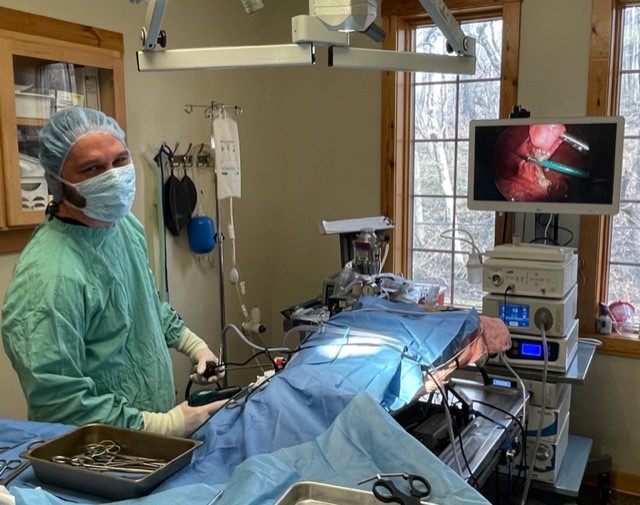VetOvation Tech Talk
Vessel Sealing Devices vs. Traditional Ligation: A Comparison
The use of vessel sealing devices is one of the most popular methods for closing off vessels during surgeries. But how does using a tool with energy compare to a traditional ligation? Today we’re breaking down some key differences between these two methods. Armed with this knowledge, vets can make more informed decisions when choosing veterinary surgical supplies for their practices.
What is a Vessel Sealing Device?
A vessel sealing device is a hand-held medical tool that uses high-frequency electrical energy to heat up specialized blades designed to cut, divide, or coagulate biological tissues. This tool comprises two components—the generator and the handpiece—which operate using electricity. The generator delivers radio-frequency energy to tissue captured between the jaws and divides sealed tissue with a user-actuated blade. It will effectively seal and cut vessels up to and including 7mm in diameter, as well as tissue bundles. An instant seal is formed that minimizes bleeding and other post-operative complications.
Pros
The primary benefit of vessel sealing devices is that they allow vets to perform procedures with minimal tissue trauma and blood loss. It will also provide for a faster and more efficient surgery for cases like an open spay, a neuter or soft palate resection. The vessel sealer allows the veterinary surgeon to perform more complex cases safely and efficiently such as laparoscopic spays, splenectomy, amputation, pyometra resection and mass removals.
Cons
The vessel sealing technologies all require an electric generator and a handpiece that is only good for a limited number of cases. Therefore, the cost of the device can be high on the front end. Also, the handpieces are made of plastic and cannot be sterilized in a standard autoclave. The practice must have access to a low temperature gas sterilizer to clean these devices to prepare them for their next procedure.
What is a Traditional Ligation?
Unlike operations that use vessel sealing devices, a traditional ligation is a more straightforward procedure that involves tying off the end of a blood vessel with sutures or forceps. The suture is usually made of an absorbable material such as silk or polypropylene, with forceps holding the wound together while vessel ends are tied off. Tying off is completed by looping the suture material around both ends before cinching them together.
Pros
The primary benefit of traditional ligation is that it’s done quickly and efficiently in most cases. It requires minimal equipment and is learned during residency. Traditional ligations are also less expensive than more advanced techniques, which require specialized tools and expertise.
Cons
Though more common than ablation, traditional ligation can sometimes cause tissue damage due to excessive force applied during the tying-off process. Without fusing the vessels closed, there is no guarantee that all vessels will be successfully and permanently sealed which could lead to excessive bleeding in some cases. This makes the procedure not only more dangerous but more prone to error.
Vetovation | Vessel Sealing Devices
While traditional ligation is still widely used in veterinary medicine, more advanced techniques like ablation via vessel sealing devices have been developed over recent decades. If you’re searching for vessel sealing devices, Vetovation can help! From routine reproductive procedures like spaying and neutering to more complex procedures like a splenectomy, we have a vast range of veterinary surgical supplies for your practice. To browse our full selection of veterinary devices, visit our website today.
